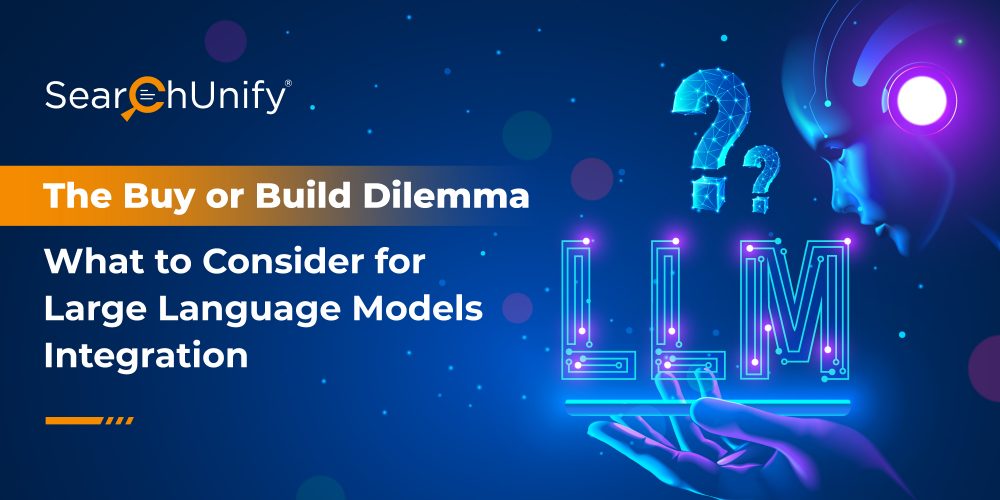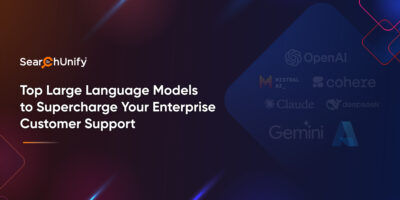
Welcome to the world of Large Language Models (LLMs), where the possibilities are endless and the benefits are undeniable.
Large language models (LLMs) have taken the tech world by storm. After all, they are revolutionizing the way we communicate, learn, process, and retrieve information.
However, as the tech world continues to be mesmerized by the power and potential of LLMs, the decision to build your own or opt for a ready-made solution has become a pressing dilemma.
But worry not! In this blog post, we are going to delve into the intricacies and the key considerations if you should build or buy your LLM.
Maximize Your LLM Strategy: Build, or Buy?
1. Cost effectiveness
When deliberating between building and buying LLM integration, cost emerges as a crucial factor. Constructing an LLM from scratch demands significant financial investment, time, and specialized skills and resources. Organizations must procure hardware, software, and proficient personnel for model development, training, and refinement.
Alternatively, buying pre-trained LLMs provides a flexible and cost-effective option for organizations seeking to utilize these models right away. LLM platform vendors often offer pre-trained models at a fraction of the cost.
The flexibility in cost, determined by factors such as model size, task complexity, and desired customization level, empowers decision-makers with a range of options.
For instance, OpenAI’s ChatGPT model reportedly costs up to $700,000 a day due to expensive servers. However, Microsoft’s Azure cloud hosts the model, so OpenAI does not have to invest in a physical server room. Through such an estimation, OpenAI could be spending at least $100K per day, or $3 million monthly, on running ChatGPT. These are just ballpark numbers, and the actual cost could vary significantly based on the complexity of the model and the resources required for its development.

2. Effort and Training
Building a custom language model requires a significant amount of effort, especially during the initial stages of development, where data needs to be collected, annotated, and processed. It is a time-consuming and complex process that requires specialized expertise in machine learning, natural language processing (NLP), and software development.
On the other hand, buying a pre-built language model is a much simpler solution. The model is already designed, tested, and trained by experts in the field, and is typically available as a service that can be accessed via a subscription fee based on usage. This means that there is little to no effort required in developing and training the model, allowing organizations to focus more on integrating the model into their systems and workflows.
A Microsoft blog shared the details of the hardware specifications used to train OpenAI’s latest language model, Codex, which is similar in architecture to ChatGPT. Did you know that the training process for Codex involved utilizing 285,000 CPU cores and 10,000 GPUs over several months, indicating the massive amount of computing power required to train these models?
3. Control
Building a custom language model offers enhanced control over behavior, architecture, and training. This precision facilitates meeting specific requirements and overcoming unique challenges.
Conversely, purchasing a pre-built language model does come with some limitations. It restricts control over architecture and training, hindering the ability to address specific use cases and challenges without fine-tuning and adaptation. Control also tackles the issue of hallucination, commonly observed in generative language models, crucial in accuracy-dependent applications like chatbots.
Another aspect to consider is the security of the model and training data. Ensuring non-sensitive and non-proprietary training data is essential for custom models. Additionally, the cost of training GPUs necessitates a robust and cost-effective strategy.
4. Compatibility with Existing Infrastructure
Compatibility issues have a significant impact on the cost and timeline of integration, as well as the effectiveness of the model.
A custom language model requires significant computational resources for development and training. These include upgrading hardware such as CPUs and GPUs, as well as investing in additional data storage infrastructure. The cost of these upgrades is a lot more than anticipated and should be factored into the decision-making process.
However, ready-made LLM requires integration with existing APIs or software. Compatibility with these systems is critical to ensure seamless integration and to avoid additional costs or delays in implementation.
A survey conducted among American business leaders found that approximately 25% of companies saved between $50,000 and $70,000 by incorporating ChatGPT into their operations. Furthermore, 11% of respondents reported savings exceeding $100,000 after implementing ChatGPT into their workflow.
5. Customizability
Customization is another crucial consideration when deciding between buying and building an LLM. Building a custom model enables businesses to meet specific requirements, language, and use cases. Organizations can fine-tune the model to achieve high accuracy in recognizing and understanding domain-specific terminologies, colloquialisms, and idioms.
For example, a company may require a language model that can identify and classify specific types of customer feedback to improve customer service. By building a custom model, the company can train the model on their own data and optimize it to accurately identify and categorize customer feedback, resulting in more effective customer service.
On the other hand, pre-built language models are designed to be generic and cater to a broad range of applications and use cases. This may not meet the specific needs of a particular organization or industry, resulting in lower accuracy and less effective results.
It’s also important to consider the role of prompt engineering in customizing LLMs. This is especially useful for organizations that require specific adaptations or fine-tuning of a pre-trained model, as prompt engineering can provide more relevant and
accurate outputs.
6. Data Privacy and Security
Finally, evaluating the model’s privacy and security standards before purchasing or building it can help prevent data breaches and maintain customer trust.
One important aspect to consider is whether the model is a “single-tenant solution,” meaning it is dedicated to a single customer rather than being shared with others. This helps prevent unauthorized access to sensitive data and reduces the risk of data leaks. Additionally, gated credit card numbers can help enhance security, ensuring that payment information is kept private and secure.
On the other hand, buying a pre-trained model from a reputable vendor offers the benefit of established privacy and security protocols. Vendors often have experience working with sensitive data and have established security measures in place to protect their customers’ information.
OpenAI introduced the most recent iteration of ChatGPT, GPT-4, in March 2023, aiming to address user concerns that had arisen with GPT-3.5. These concerns primarily centered around the potential misuse of the AI chatbot and its safety protocols. In their latest report, OpenAI stated that GPT-4 showcased significant improvements in various areas. Notably, the model’s responsiveness to requests for disallowed content has declined by 82% compared to its predecessor. Additionally, the generation of toxic content has been reduced by nearly 89%. Moreover, when confronted with sensitive inquiries such as medical advice or self-harm, the model now adheres to company policies 29% more frequently than before.
Unlock Efficiency: Choose the Ideal LLM Solution
As we look toward the future of language models, it is clear that the buy or build dilemma will continue to be a relevant issue.
So, why don’t you use a hybrid approach that combines both buying and building? Organizations can buy pre-built models as a starting point and then fine-tune them to meet their specific needs. This approach can provide the best of both worlds in terms of cost, effort, control, security, and other considerations stated above.
Need more insights into this? Tune into this webinar to learn how the hybrid approach help you achieve the best of both worlds.














